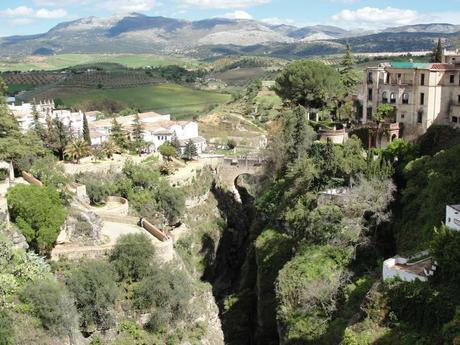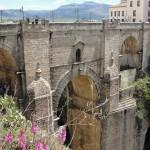
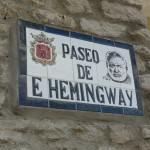
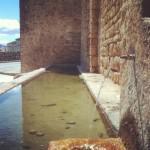
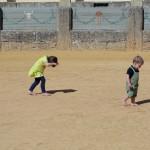

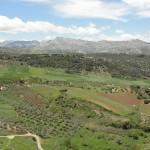
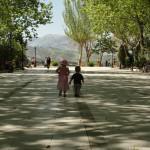
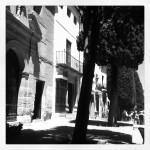
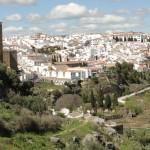
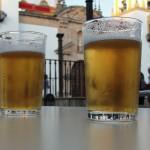
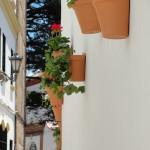
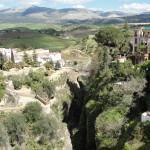
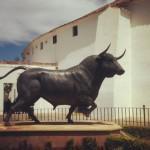
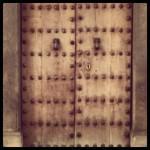
I finally made it back to Ronda this year after an absence of twenty-one years. It’s a place that has long-held a curious hold over my travel plans. My first visit had been for a few hours in the summer of 1991 and despite having passed through Andalusia on a dozen or so occasions since, I hadn’t ever returned to the town that boasts probably the most spectacular location in the whole of Spain. I’d threatened to return more than once, even going as far as to book accommodation for an overnight stop, but for various reasons kept failing to make it back. In truth I had some demons to exorcise when it comes to Ronda because that first time, to shoehorn another Beach Boys lyric in, was the worst trip I’ve ever been on.
The scenario was this; family of four, crammed into a beat-up SEAT Marbella without air conditioning as temperatures approached the high 90s and a father behind the wheel who got sweaty palms at the thought of driving further than 200 metres attempting to traverse one of western Europe’s most nerve-jangling mountain drives. In my youthful innocence I knew nothing about the potential hazards that lay ahead. Yeah, I knew we were heading up into the hills, but I’d holidayed in Wales before, the odd steep incline was nothing new to me. It didn’t take long to realize this wasn’t a stroll across the Cymoedd De Cymru as each torturous curve in the road was met with cries from my father of “Bloody hell” and “Shit! Shit!” every two minutes, along with some xenophobic comments that don’t need repeating here. It’s easy to forget now with the Spanish road system having been completely overhauled in the last decade or so, but in the days before European governments racked up unsustainable levels of debt on public services, driving in Spain often felt like taking your life in your own hands. Uneven surfaces, sheer cliff drops with no protective barriers and suicidal local drivers who wanted to overtake whenever a blind bend arose. There was one moment when my father misjudged a corner and strayed across the middle white line, only huge good fortune that the other side of the road was free of traffic prevented a collision. It wasn’t easy watching your old man, a person who up to that point you had respected and believed knew no fear, reduced to a quivering wreck. So I didn’t watch. I buried my head under a cap and listened to Isn’t Anything by My Bloody Valentine on a walkman. I figured that if was to spend my last moments on earth hurtling over an Andalusian cliff the intense, trance-like guitar of Kevin Shields would be a fitting soundtrack. This unfortunate scenario was thankfully avoided, but the few hours we spent in Ronda were spent in silent contemplation by each one of us as we all knew that we had to go back down that same road, only this time on the exterior side. It ruined what should have been a memorable visit. Everything about Ronda suggested it was a place of unique beauty and there wasn’t a Linekers bar or English breakfast menu in sight which was quite a shock after spending the first week of the holiday tied to the resorts of the Costa del Sol. I could grow to like this place I thought, but not enough to want to make that car journey ever again. The drive down was as perilous as that we had made up. On more than one occasion I feared I would be kissing this cruel world goodbye, but we all lived to see another day, safely returned to the comforting sight of high-rise coastal apartments, fast food outlets and pubs selling John Smiths. How lucky we were. In the immediate aftermath of this notorious day trip Ronda became the unutterable word in my parental home. Its mere mention brought cold shudders from all who had been involved. We developed thousand yard stares if others spoke of the sheer beauty and general loveliness of Ronda, scarred by flashbacks of what took place that day on the A-397.
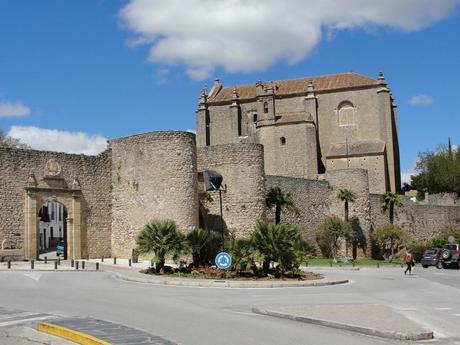
Hemingway spent a lot of time in Ronda, which must have pleased the local bar owners, and the town is synonymous with probably the most famous chapter he ever wrote; chapter 10 of For Whom the Bell Tolls. Papa describes in gruesome detail how during the Spanish Civil War the fascist sympathisers of a small town were locked up in the town hall, then one by one brought out to be clubbed and beaten by a frenzied mob until they were eventually put out of their misery by being thrown off a cliff. Although never naming the town in the book Hemingway later confided that it was based on events that took place in Ronda in 1936 when some 500 people, mostly Nationalists, were thrown into the gorge. I had this in mind when standing on the balcony at the end of the shaded park, Alameda del Tajo, taking in the outstanding views of the surrounding Serrania de Ronda. It’s hard to imagine such terrible things happening in such a beautiful place, but then both sides in the Spanish Civil War were not averse to a bout of barbarity against a beautiful backdrop. If you follow the path that runs parallel to the gorge you come to another picturesque site that’s also witnessed the odd moment or two of butchery in its time. Ronda’s Plaza del Toros enjoys legendary status in Spain for being the oldest bullring in the country (opening in 1785) and also the place where the modern corrida bullfight was born. It was here that Francisco Romero decided that fighting a bull on a horse, as was the style at the time, was rather tame so to jazz things up a bit he jumped off and began scrapping on foot. This new style proved extremely popular with the Spanish public and the new rules were eventually set in stone by Francisco’s grandson, Pedro. Horses across the Iberian Peninsula still mark the day with an equine national holiday.
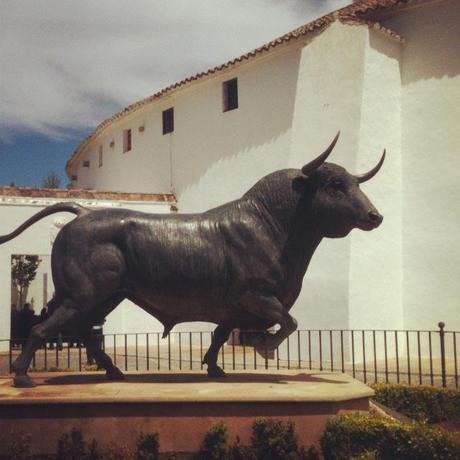
Entrance to the Plaza de Toros allows you to walk freely through the arena itself so you can create some kind of feel for what it must be like as a matador as you stand in the middle of the bullring. Exceptionally nerve-wracking would be my guess, even if you do have a sword in hand. My own views on bullfighting change with the weather; where once I was vehemently opposed to it, now I kind of shrug my shoulders and accept that bullfighting is Spain, Spain is bullfighting. Thrown in with a bit of flamenco and patatas bravas. Plus I’m also very fond of a plate of rabo de toro so I can’t be too critical. Hell, I once killed a pigeon with an air rifle so who am I to lecture a nation on its animal rights record? As my children ran barefoot through the bullring’s sandy surface, re-enacting their own corrida, I did find myself wondering how much blood had been spilled on that very same sand. Then I lightened up a bit and decided to go drink some beer and didn’t give it any more thought.
The Plaza de Toros resides in the more modern Mercadillo quarter and this is connected to the old Moorish part of town, La Cuidad, by Ronda’s undoubted top attraction the Puente Nuevo. This eighteenth-century arched bridge straddles the Rio Guadelevin 120 metres below and is reputedly one of the most photographed sights in the country, something you won’t fail to believe as you fight for elbow space just to catch a glimpse of it. Heading into the old town the streets start to narrow and every so often a viewing platform allows you to take in more of the spectacular views. It’s perfect meandering territory with camera at the ready. At least I imagine it probably would be for anyone not pushing a double-buggy across cobbled streets in the mid-afternoon sun. For people like that there are thankfully plenty of bars offering a seat and respite from the intensity of the sun.
In recent years I’ve developed a fondness for collecting old travel books, one of which is Fodor’s 1957 Spain and Portugal guide. Inside it describes Ronda as “a romantic kingdom of mountaineers, smugglers and horse trainers”, which I’m not sure is a compliment or not but certainly makes Ronda sound a few legions more exciting than today’s reality. If that particular author were writing today they would probably be more inclined to say that it’s a kingdom of Costa del Sol daytrippers, middle-aged northern Europeans and tour bus drivers. The middle-aged northern Europeans are a particularly ferocious bunch. On one occasion while walking along the pavement me and pushchair nearly got ramrodded from the side by a tiny Frenchwoman leaving a hotel and carrying a suitcase of such epic proportions that Ryanair officials would spontaneously self-combust if you ever tried checking it in. This is a very common sight in Ronda, not senior citizens from France trying to take out kids in pushchairs, although that’s not to say it doesn’t happen on a frequent basis, but pensioners in general. Most of them following behind someone holding an unopened umbrella in the air. Tour groups desecrate the landscape; endless streams of them lazily ambling behind their pied piper until they are herded back on to their coaches leaving a relative calm to descend upon the town as the rondenos gradually emerge from shaded living rooms to reclaim their town once again. What tourists do remain after the tour buses have all departed for the day generally appeared to be mature couples, child-free and unwilling to adapt to the Spanish way of eating late. Maybe it was the fact we were visiting just outside of the peak summer period but restaurants tended to shut up early, having seen most of their diners depart at a time when Seville is just getting ready to get the night’s proceedings underway. It all gives Ronda a strangely subdued atmosphere during the evening, at odds with Andalusia’s general tendency to keep going way past the midnight hour.
For a town that had Papa for company for so many years there has to be somewhere to catch a nightcap or two and once you break out of the confines of the tourist ring there’s still to be found the reassuring sight of locals spilling out on to pavements and debating the latest football news over a vino tinto and plate of pulpo a Gallego as the kids hare around like fireflies. We found all this in the Barrio de San Francisco quarter, which lies through the town’s main Moorish gate, Puerta de Almocabar, which is still looking mighty fine for its age. In what would have once been the town’s cemetery, lying as it does just outside the old city walls, things start to come to life in the handful of tapas bars and restaurants. The downside to all this is that it’s an uphill walk back into town so on the nights we couldn’t face the climb we ended up in Plaza del Socorro, a bustling pedestrianized square back in La Mercadillo quarter. As befitting any Spanish plaza worth its sal there are plenty of locals chewing the fat and a child’s game of footy taking place against immaculate church doors. It was here, while enjoying a few sundowners on our final night before heading further north that I was able to finally accept that the ghosts of Ronda past had finally been exorcised. I was glad I’d made it back, if not a little sad I’d left it so long. Hemingway thought Ronda the most romantic town in Spain, although after the amount of daiquiris he knocked back he probably wouldn’t have noticed if he was in Hull on a wet Wednesday evening, but he has a point. Ronda is one of several gems in the Andalusian crown, perhaps not outshining the likes of Cordoba, Cadiz and Granada, but certainly worthy of more than just a fleeting visit that appears to be the way of so many. Ronda demands to be explored and soaked up at leisure. Comparing my two contrastingly different visits I’m reminded of a quote from For Whom The Bell Tolls, “I loved you when I saw you today and I loved you always but I never saw you before.” Or to put it another way, it’s definitely in my top 5 destinations where Hemingway went on a bender.
